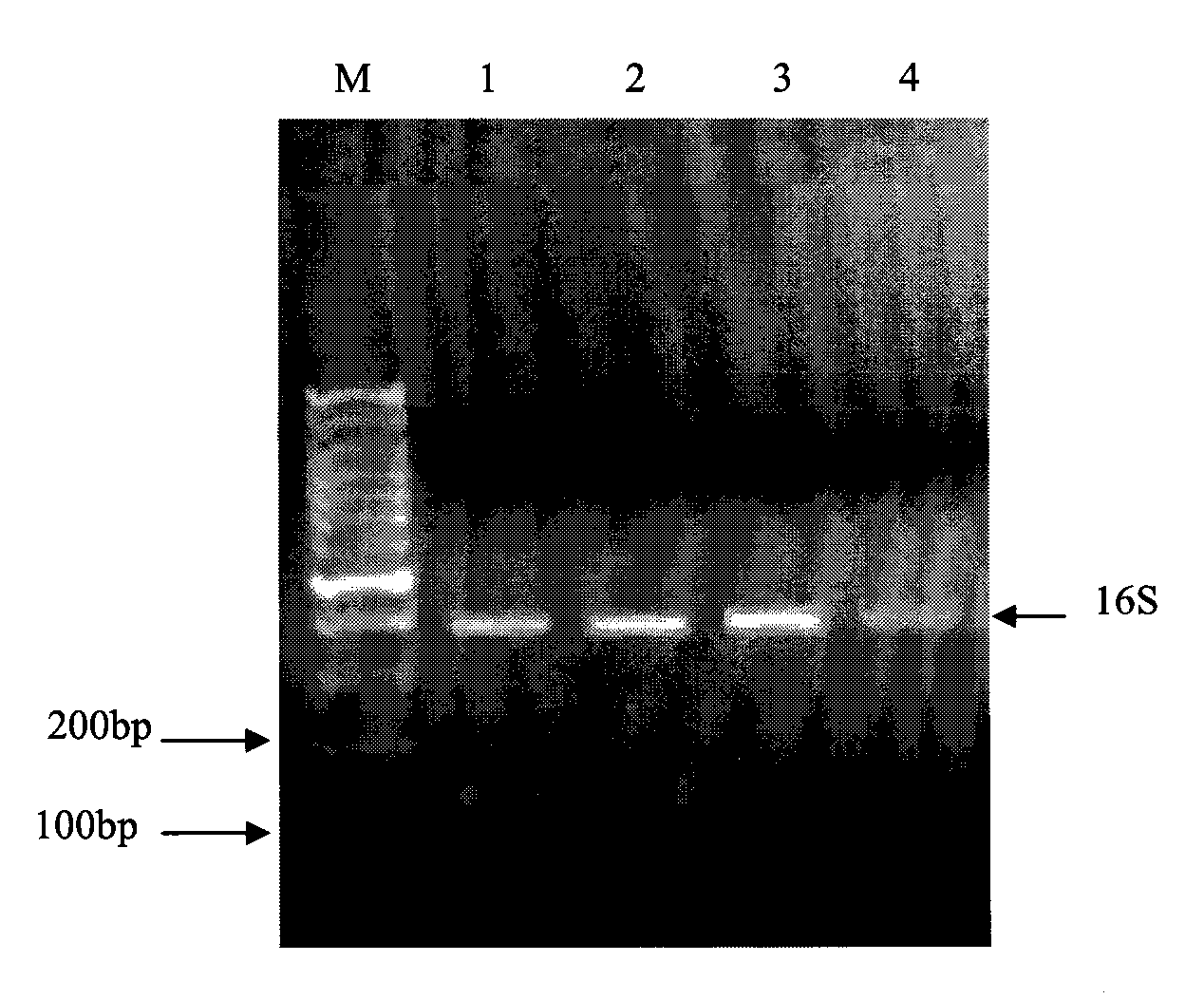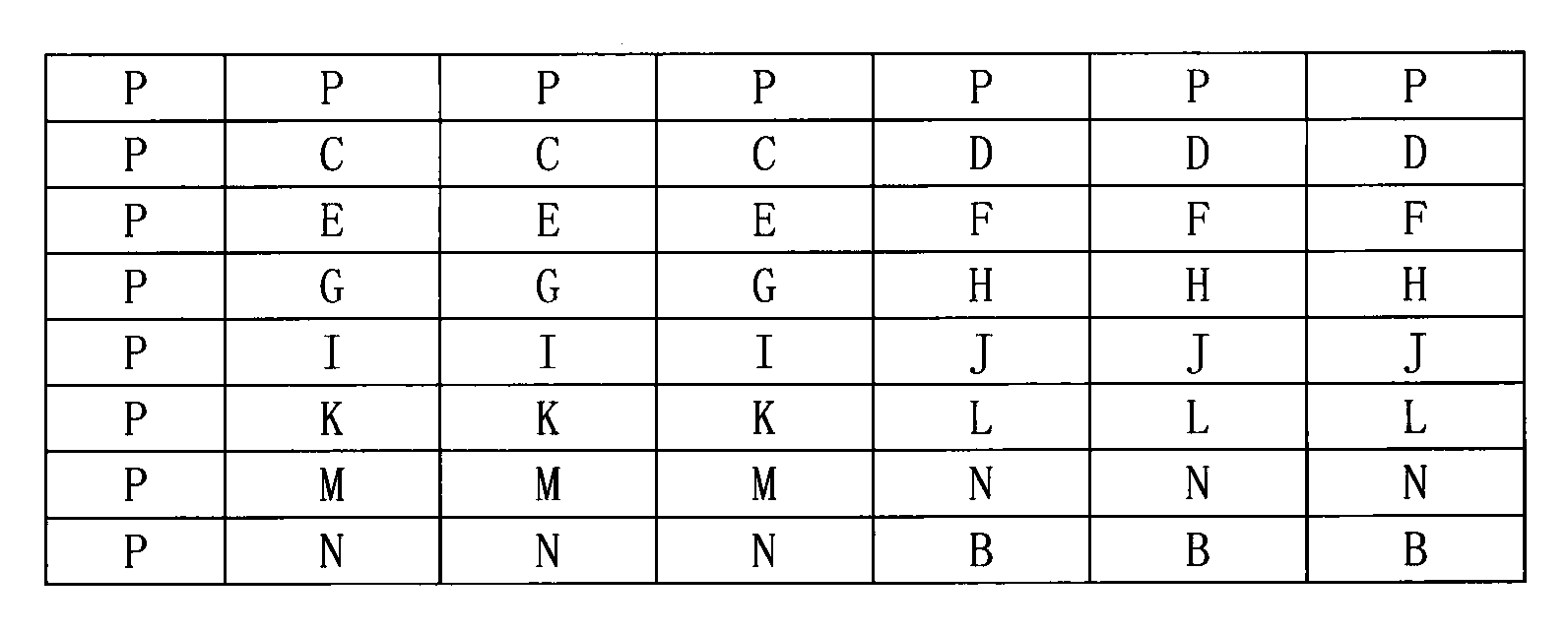Primer, probe and chip for detecting and identifying salmonella typhosa nucleic acid segment
A technology of Salmonella nucleic acid and Salmonella typhi, which is applied in the direction of DNA/RNA fragments, microbial detection/inspection, and resistance to vector-borne diseases. specific effect
- Summary
- Abstract
- Description
- Claims
- Application Information
AI Technical Summary
Problems solved by technology
Method used
Image
Examples
Embodiment Construction
[0029] I. Design of primers and probes
[0030] The existing Salmonella typhi genome sequence was compared, and a highly conserved segment with no secondary structure was selected [Salmonella typhi H1d gene sequence (GenBank X16406.1, 228bp), as shown in SEQ ID NO.1], and multiple pairs were designed. For primers and probes, the length of the primer is generally about 20 bases, and the length of the probe is generally about 25 bases. There is no complementary sequence between and within the primers. The difference between the Tm values of the two primers does not exceed 3°C. Through experiments, the optimal primer and probe combination was screened as follows:
[0031] The sequence of the upstream primer F-080105 (shown in SEQ ID NO. 2) used to detect and identify the nucleic acid fragment of Salmonella typhi: AATGGGCGACGATTTCTATG
[0032] The sequence of the downstream primer R-080105 (shown in SEQ ID NO. 3) used to detect and identify the nucleic acid fragment of Salmonella typh...
PUM
 Login to View More
Login to View More Abstract
Description
Claims
Application Information
 Login to View More
Login to View More - R&D
- Intellectual Property
- Life Sciences
- Materials
- Tech Scout
- Unparalleled Data Quality
- Higher Quality Content
- 60% Fewer Hallucinations
Browse by: Latest US Patents, China's latest patents, Technical Efficacy Thesaurus, Application Domain, Technology Topic, Popular Technical Reports.
© 2025 PatSnap. All rights reserved.Legal|Privacy policy|Modern Slavery Act Transparency Statement|Sitemap|About US| Contact US: help@patsnap.com



